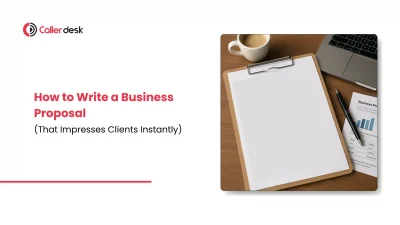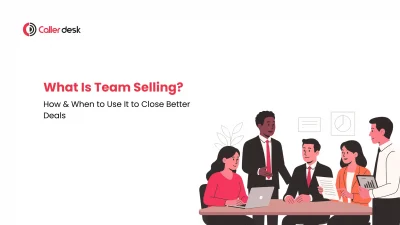Let’s be honest — cold calling makes most people nervous.
Calling someone who doesn’t know you and trying to sell them something? That’s not easy.
But here’s the truth:
Cold calling is still one of the best ways to grow your business—if you do it right.
In B2B sales, your goal is to reach decision-makers—people who can actually say “yes” to your offer. And the fastest way to reach them? Pick up the phone.
Yes, it’s uncomfortable at first.
Yes, you’ll hear “no” a lot.
But with the right mindset and a smart approach, you’ll start hearing “yes” more often than you think.
This blog will help you build confidence, avoid common mistakes, and make each call better than the last—without sounding like a pushy salesperson.
Let’s break it down step-by-step and make cold calling feel simple.
What Is B2B Cold Calling? (Simple Explanation)
B2B cold calling means calling someone from another company who doesn’t know you yet.
You call to:
- Say who you are,
- Talk about what your business offers,
- And see if they are interested in your product or service.
It’s called cold because there’s no warm connection—no meeting, no email, no chat before the call.
👉 Imagine this:
You’re walking into someone’s office and saying,
“Hi! I think I have something that can help your business. Can we talk for a minute?”
That’s what cold calling is—but you do it over the phone.
If what you say is useful, they might be open to listening—and maybe even buying.
Before the Call: 10 Practical Tips to Prepare for Cold Calling
Cold calling doesn’t start when you dial the number. It starts with preparation. Just like a student reviews notes before an exam or an athlete warms up before a match, you need to get ready before making a business call.
Here are 10 simple things you should do before your first cold call.
1. Know Who You’re Calling
Don’t call just anyone. Try to contact people who have the power to make decisions in a business. These could be managers, directors, or business owners. Calling the right person saves time and increases your chances of success.
2. Do Basic Research
Before the call, find out a little about the person and their company. You can check their LinkedIn profile, visit the company’s website, or search for any recent news. This helps you understand their business and makes it easier to talk about how you can help them.
3. Write a Simple Script
A script is like a guide for your call. You don’t have to read it word-for-word, but it helps you stay on track. Your script should include:
- A short introduction about yourself
- The reason for your call
- A key question to start the conversation
Keep it natural. The goal is to start a real conversation, not to sound like a robot.
4. Check Your CRM or Records
Before you call, check if your company has already contacted this person. Look for notes or past conversations. This helps you avoid repeating questions or sounding unprepared.
5. Send an Email First (Optional)
Some people don’t like surprise calls. Sending a short email first can make your call feel less random. It also gives the person a chance to know who you are. If they open the email, it’s a sign they may be interested in talking.
6. Choose the Best Time to Call
Try calling during times when people are more likely to be free. The best times are usually in the morning (between 9 AM and 11 AM) or early afternoon (between 2 PM and 4 PM). Avoid calling during lunch hours or late in the day.
7. Use a Call List or Dialer
To save time, prepare a list of contacts you want to call. Use a tool or system that helps you go through this list quickly and efficiently. This allows you to make more calls in less time without getting confused.
8. Get Into a Confident Mindset
It’s normal to feel nervous before a cold call, especially if you’re new to it. Do something that makes you feel calm and confident. This could be deep breathing, listening to motivational music, or just reminding yourself that you’re here to help.
9. Set a Goal for the Call
You don’t need to sell anything on the first call. Instead, aim for something small and achievable:
- Set up a meeting
- Learn about their current problems
- Start a friendly business conversation
Having a clear goal makes the call more focused and less stressful.
10. Keep a Notepad or Notes App Ready
Be ready to take notes while talking. Write down important things the person says, such as their needs, objections, or any follow-up they expect. These notes will be useful later when you contact them again.
During the Call: 10 Practical Tips to Prepare for Cold Calling
You’ve done your homework. The phone is ringing. Now someone picks up.
What you say next decides how the call goes.
Here are 10 simple tips to help you sound confident, keep the conversation going, and make a strong impression.
1. Start with a Friendly Tone
Smile when you speak. Even though they can’t see you, they can hear your mood.
A friendly, warm voice makes the other person feel safe and open to talk.
2. Make the First 15 Seconds Count
The beginning of the call matters the most. You have just a few seconds to grab attention.
Say who you are, what you do, and why you’re calling—clearly and quickly.
Example:
“I’m Rahul. I help companies handle customer calls better. Can I take 30 seconds to share how?”
3. Ask Open-Ended Questions
Avoid questions that get just a “yes” or “no.”
Instead, ask questions like:
- “How do you handle incoming customer calls today?”
- “What’s your biggest challenge when it comes to sales?”
These questions open the door for longer, useful conversations.
4. Listen More Than You Talk
Once you ask a question, be quiet and listen carefully.
Don’t plan your next sentence while they’re talking.
The more they talk, the more you understand their problems—and the better your chances of helping them.
5. Don’t Be Afraid of Silence
After you ask something, don’t rush to speak again.
Sometimes, a few seconds of silence help the other person think and respond better.
Silence shows you’re not just waiting to talk—you’re there to listen.
6. Talk About Their Problem, Not Your Product
People don’t care about features—they care about solutions.
Instead of saying:
“We have a smart phone system.”
Say:
“Our system helps your customers reach the right person in seconds, without long wait times.”
Make it about what they need, not what you have.
7. Talk About Value Before Price
If someone asks, “How much does it cost?” don’t answer right away.
Say:
“That depends on your needs. Can I ask a few questions first to understand what you’re looking for?”
This helps you explain the value before discussing cost.
8. Don’t Try to Sell Everything in One Call
Your goal on a cold call is not to close the deal.
Focus on learning about the other person, starting a relationship, or setting up a next call.
Keep things simple and clear.
9. Leave a Good Voicemail If Needed
If they don’t answer, leave a short voicemail that explains:
- Who you are
- Why you called
- What you can help with
- Your phone number
Say your number slowly at the beginning so it’s easy to note down.
Example:
“Hi Ankit, this is Riya. I help businesses improve customer calling experience. You can call me back at 9876543210.”
10. End Every Call With a Next Step
Don’t hang up without knowing what’s next.
Ask something like:
“Can we schedule a short call this week to discuss this more?”
This keeps the conversation moving forward and shows you’re serious.
After the Call: 5 Easy Things You Should Always Do
Just because the call is over doesn’t mean your work is done.
If you want to turn more calls into real business, do these 5 things right after every call:
1. Write Down What Happened
As soon as the call ends, open your CRM or notebook and write down:
- What did the person say?
- What are their needs or problems?
- Did they say yes or maybe?
This helps you remember important details when you call or email them later.
2. Follow Up the Right Way
If they didn’t say “yes” right away, that’s okay!
Most people need a few follow-ups before they decide.
Try sending:
- A short email saying “Thanks for the call”
- A message on WhatsApp (if they’re comfortable with it)
- A friendly ping on LinkedIn
Keep it short, helpful, and remind them how you can solve their problem.
3. Save Common Objections
Many people will say things like:
- “We’re already using another tool.”
- “We don’t have a budget.”
- “Call me later.”
Write these down in a list. Then, prepare simple and smart answers for each one.
This makes you ready the next time someone says the same thing.
4. Check Your Numbers
Keep track of your daily cold calling stats:
- How many calls did you make?
- How many people picked up?
- How many meetings or demos did you schedule?
When you watch your numbers, you can see what’s working—and fix what’s not.
5. Make More Calls Tomorrow
Cold calling is like learning to ride a bike.
You only get better by doing it again and again.
Even if one day was bad, don’t stop. Call again tomorrow.
Every call teaches you something—and brings you closer to your next sale.
Mistakes to Avoid in B2B Cold Calling
Even good salespeople make mistakes. Here are 5 common ones—and how you can avoid them.
1. Talking Too Much About Yourself
Don’t keep talking about your company or product the whole time.
Instead, ask the other person questions. Let them talk about their problems. Your job is to listen and help.
2. Trying to Sell Too Fast
If you start pitching right away, people will lose interest.
First, understand what they need. Then, explain how you can solve their problem.
3. Sounding Nervous or Like a Robot
If you sound scared or like you’re reading from a script, they won’t trust you.
Practice your pitch so you sound calm and natural—like you’re just having a normal chat.
4. Not Following Up
One call is not enough. Most people don’t say yes right away.
Always send a follow-up email or call again after a few days. It shows you care and you’re serious.
5. Giving Up Too Soon
If someone says “not now,” it doesn’t mean “never.”
Keep trying. Follow up again later. Many sales happen after the fourth or fifth try.
Conclusion
Cold calling still works—if you do it smartly.
Prepare well, listen more, and focus on solving problems, not just selling. Every call helps you get better.
Stay consistent, keep improving, and don’t give up after the first “no.” The next “yes” might just be one call away.
To make your calling efforts smoother and more efficient, consider using a cloud-based calling solution like the one offered by CallerDesk—designed to help businesses scale their outreach with ease.





